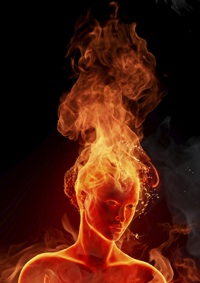A magazine where the digital world meets the real world.
On the web
- Home
- Browse by date
- Browse by topic
- Enter the maze
- Follow our blog
- Follow us on Twitter
- Resources for teachers
- Subscribe
In print
What is cs4fn?
- About us
- Contact us
- Partners
- Privacy and cookies
- Copyright and contributions
- Links to other fun sites
- Complete our questionnaire, give us feedback
Search:
Moons, maths and mystical maidens

Heavens above, you’ve discovered a new celestial object! What would you call it? Would you name it Clom, Skaro, Poosh, or even Raxacoricofallapatorius? Or maybe those names are already taken. This sort of thing is complicated – even when it comes to naming new planets, moons or asteroids there are rules, and the need for a bit of computer science too.
It’s not Spock
Asteroids are named to begin with using the year and the month they were first detected. Only once their orbit has been correctly predicted can they then be named. Predicting the orbit needs a cosmic fusion of astronomy, physics and lots of computer processing to predict and then check they are where they should be. Choosing a name is not too easy either. Since 1971 when one astronomer named an asteroid '2309 Mr. Spock' after his pet cat, the IAU (the International Astronomical Union) decided to ban pets names, but that didn’t stop some creative discoverers getting the names '6042 Cheshirecat' and '9007 James Bond' agreed.
Over the moon
Moons are more difficult to name – more rules apply and more physics and computer science is needed to show they are what they are. A moon not only has to orbit a planet, it must do it in a well-defined way. For example the Cassini probe that’s exploring Saturn and its wonderful ring system discovered a range of small moons that keep the rings of Saturn crisp. Some of these tiny ‘shepherd moons’ orbit near the edges of the gaps in the rings. Materials that drift close to them are shoved back by gravity into the rings, spun off into space or made to crash on the shepherd moon itself. To be able to name one of these moons you need to be able to show that its orbit is stable. When the scientists think they have found a moon, the data from the sensors on the Cassini probe is fed into sophisticated computer simulations to show if that moon has a stable orbit. The outcome of the calculation decides if the moon is, well, a moon.
Good Moon Hunting
The software can even hunt down and find unknown moons. Using the laws of geometry and Kepler’s laws of planetary motion (three rules that German astronomer Johannes Kepler discovered in the 16th century) and applying them to the data from the probe it‘s possible to guess where a moon might be. Scientists then perform a full analysis of the data, including whether the possible moon’s orbit is affected by other known moons, and are able to determine where the previously unknown moons actually are. Using this method, scientists have even discovered so-called retrograde moons, which orbit in the opposite direction to Saturn’s rotation.
Once the orbit is predicted and checked the computer-discovered moon can be named. The scientists have now found so many of these mini moons that the rules about names have had to change.
More giants and monsters please
To start with the moons of Saturn were named after mythological Greek and Roman giants, but as more were discovered astronomers went over to naming them after the mythical Titans, who fought alongside the giants (and were pretty huge themselves). Finally as more moon hunting showed an ever larger and more fascinating picture the names had to expand to include giants and monsters in Norse, Inuit and Gallic mythologies. Astronomer Carl Murray of Queen Mary, University of London, part of the team who discovered the Saturnian moons Polydeuces and Anthe said "I never thought that a knowledge of ancient mythologies would help me do astronomy". Quite where this moon-related voyage of discovery will end no one quite knows.
Knowing the neighbourhood
Finding moons and keeping an eye on asteroids is an activity that involves astronomers, physicists and computer scientists. Without these scientists all working together, each bringing their skills to work on the problem, our solar system could be a less well-known and more dangerous place to live. We know where things are, after all. We don’t want to end up like Poosh and loose a moon.


